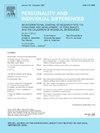Personality traits shape individuals' thought control strategies: evidence from behavioral and neuroimaging measures
IF 2.6
2区 心理学
Q1 PSYCHOLOGY, SOCIAL
引用次数: 0
Abstract
The employment of diverse strategies to control unwanted thoughts has important implications for an individual's mental health and psychological well-being, yet how personality traits influence one's selection of thought control strategy (TCS) remains poorly understood, particularly in terms of their neural underpinnings. Leveraging behavioral path analysis and resting-state functional Magnetic Resonance Imaging (fMRI), the present study examined the relationship between the Big five personality traits and TCSs in a large cohort of healthy college students. Behavior results revealed that individuals with different personality traits used distinct TCSs: neuroticism was associated with worry, punishment, and reappraisal strategies; extraversion was linked to distraction and social control strategies; openness was related to punishment and reappraisal strategies; agreeableness was associated with distraction and worry strategies; and conscientiousness was linked to distraction, worry, and reappraisal strategies. fMRI results further demonstrated that these TCSs were correlated with specific patterns of brain activity. Specifically, punishment was positively correlated with the fractional amplitude of low-frequency fluctuation (fALFF) of the bilateral inferior parietal lobe (IPL) and right middle frontal gyrus (MFG), which are involved in the self-referential processing and inhibitory control. Whereas reappraisal was positively correlated with the fALFF of the bilateral superior parietal lobe (SPL) and left superior temporal gyrus (STG), which are involved in the goal-directed attention and semantic processing. Moreover, the fALFF of these TCSs-related regions was also associated with different personality traits. While punishment was positively correlated with the fALFF of bilateral IPL and right MFG, reappraisal was positively correlated with the fALFF of bilateral SPL and left STG. Collectively, these findings offer profound insights into how personality traits shape individuals' TCSs and their neural foundations.
人格特质塑造了个体的思想控制策略:来自行为和神经成像测量的证据
使用不同的策略来控制不想要的想法对个人的精神健康和心理健康有重要的影响,然而人格特征如何影响一个人的思想控制策略(TCS)的选择仍然知之甚少,特别是在他们的神经基础方面。本研究利用行为路径分析和静息状态功能磁共振成像(fMRI)技术,对一大群健康大学生的大五种人格特质与tcs的关系进行了研究。行为结果表明,不同人格特质的个体使用不同的tcs:神经质与担忧、惩罚和重评价策略相关;外向性与注意力分散和社会控制策略有关;开放性与惩罚和重评价策略有关;宜人性与分心和担忧策略有关;尽责性与分心、担忧和重新评估策略有关。fMRI结果进一步表明,这些TCSs与特定的大脑活动模式相关。惩罚与参与自我参照加工和抑制控制的双侧下顶叶(IPL)和右侧额叶中回(MFG)低频波动分数幅值(fALFF)呈正相关。而重新评价呈正相关,双边的fALFF顶叶(SPL)和左颞上回(STG),参与目标导向的注意力和语义处理。此外,这些tcss相关区域的fALFF也与不同的人格特征相关。惩罚与双侧左左、右左左颞叶颞叶颞叶颞叶颞叶颞叶颞叶颞叶正相关,而重评价与双侧左左颞叶颞叶颞叶颞叶颞叶颞叶颞叶颞叶颞叶颞叶颞叶颞叶颞叶颞叶颞叶颞叶颞叶颞叶颞叶颞叶颞叶颞叶颞叶颞叶正相关。
本文章由计算机程序翻译,如有差异,请以英文原文为准。
求助全文
约1分钟内获得全文
求助全文
来源期刊

Personality and Individual Differences
PSYCHOLOGY, SOCIAL-
CiteScore
8.50
自引率
4.70%
发文量
577
审稿时长
41 days
期刊介绍:
Personality and Individual Differences is devoted to the publication of articles (experimental, theoretical, review) which aim to integrate as far as possible the major factors of personality with empirical paradigms from experimental, physiological, animal, clinical, educational, criminological or industrial psychology or to seek an explanation for the causes and major determinants of individual differences in concepts derived from these disciplines. The editors are concerned with both genetic and environmental causes, and they are particularly interested in possible interaction effects.
 求助内容:
求助内容: 应助结果提醒方式:
应助结果提醒方式:


